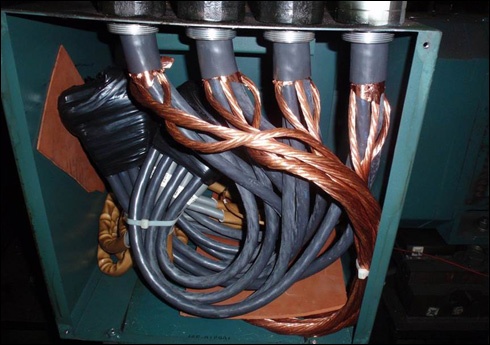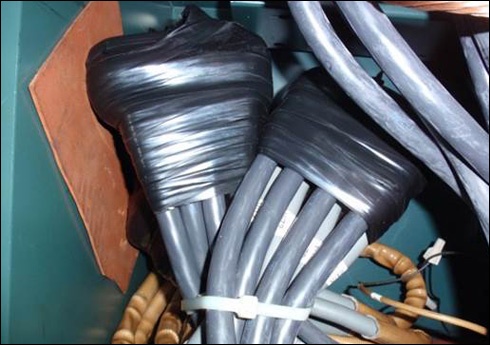Learn How to Specify Parallel VFD Cables for High-Power Motors and Drives
VFD cables are used to connect Variable Frequency Drives (VFDs) to motors and, when specified correctly, they play a large role in mitigating harmful electrical noise. This noise can disrupt production and lead to downtime or quality control issues, which can be a major drawback to VFDs that otherwise have a quick payback.
In previous articles on VFD cable, I discussed the reasons you want to specify high-performance rather than construction-grade VFD cable for your VFD applications. I also pointed out that for high-power motors there are advantages to using two or more parallel VFD cables over one very large VFD cable or pipe and wire solution.

Multiple parallel VFD cables are easier to terminate in confined spaces than a single large cable.
Common Issues for VFD Applications
While VFDs provide multiple benefits, including longer motor life, energy savings, improved process control and higher reliability – they also create issues. The four main issues are described below.
|
Issue |
Impact |
|
Common mode current |
Electrical noise emission that can:
|
|
Capacitive coupling and cable charging |
Adjacent cable and motor leads absorb current from the motor and as a result their performance is degraded. This may cause drives to trip and go offline or lead to induced voltages in adjacent systems. |
|
Reflected wave voltage |
Voltage is reflected back to the motor and this increases the probability of motor or cable failure. |
|
Application safety and reliability |
Electrical noise, additional current or reflected voltage may impact the safety and reliability of equipment. |
The table above highlights potential issues with VFD applications.
High-Performing VFD Cable Mitigates Issues
The right VFD cable does an excellent job of reducing or eliminating VFD application issues. Such a cable is designed with:
- Lots of copper at ground potential
- Flexible tinned strand for high-frequency conduction and reliable termination
- Low capacitance, high dielectric strength insulation
- Effective shielding
As there is no standard for VFD cables, remember that their performance is all about copper, especially copper in the ground system.
Use Parallel VFD Cables for High-Power Motors
When the application involves motors of 200 horsepower (149 KW) or more, the conductors must grow out in proportion to the power, in order to ensure the required ampacity. Ampacity is the maximum amount of electrical current a conductor can carry before overheating, or as limited by statutory requirements.
When multiple smaller cables are paralleled, as permitted under the National Electrical Code (NEC), more efficient conduction is achieved. Additionally, VFD cables provide more copper at ground potential and this benefit is enhanced with parallel cables.
Communications in the Factory LAN
My next article in this series will continue to look at the requirements for communications within a manufacturing site’s LAN for achieving the vision of the factory of the future. I will look at data rates, cyber security, reliability and other aspects of what’s in store for upcoming industrial communications systems.

Parallel VFD cable solutions have as much as 500 percent more copper at ground potential than a single cable solution meeting NEC minimums. CMA: circular mil area, HP: horsepower
In addition, parallel cables provide more amps for each dollar spent on copper.
Finally, parallel cables are much easier to handle, lighter weight and have more flexibility than a single large cable. This facilitates installation and termination, particularly in tight spaces.

Parallel VFD cables are more flexible and easier to install than a single large cable.
A high-performance solution with multiple parallel VFD cables has the following advantages:
- Overall copper use is reduced
- More ground copper is installed, leading to reduced noise emissions
- Cables are more flexible, lighter weight and easier to terminate
- Lower pulling force is required during installation
